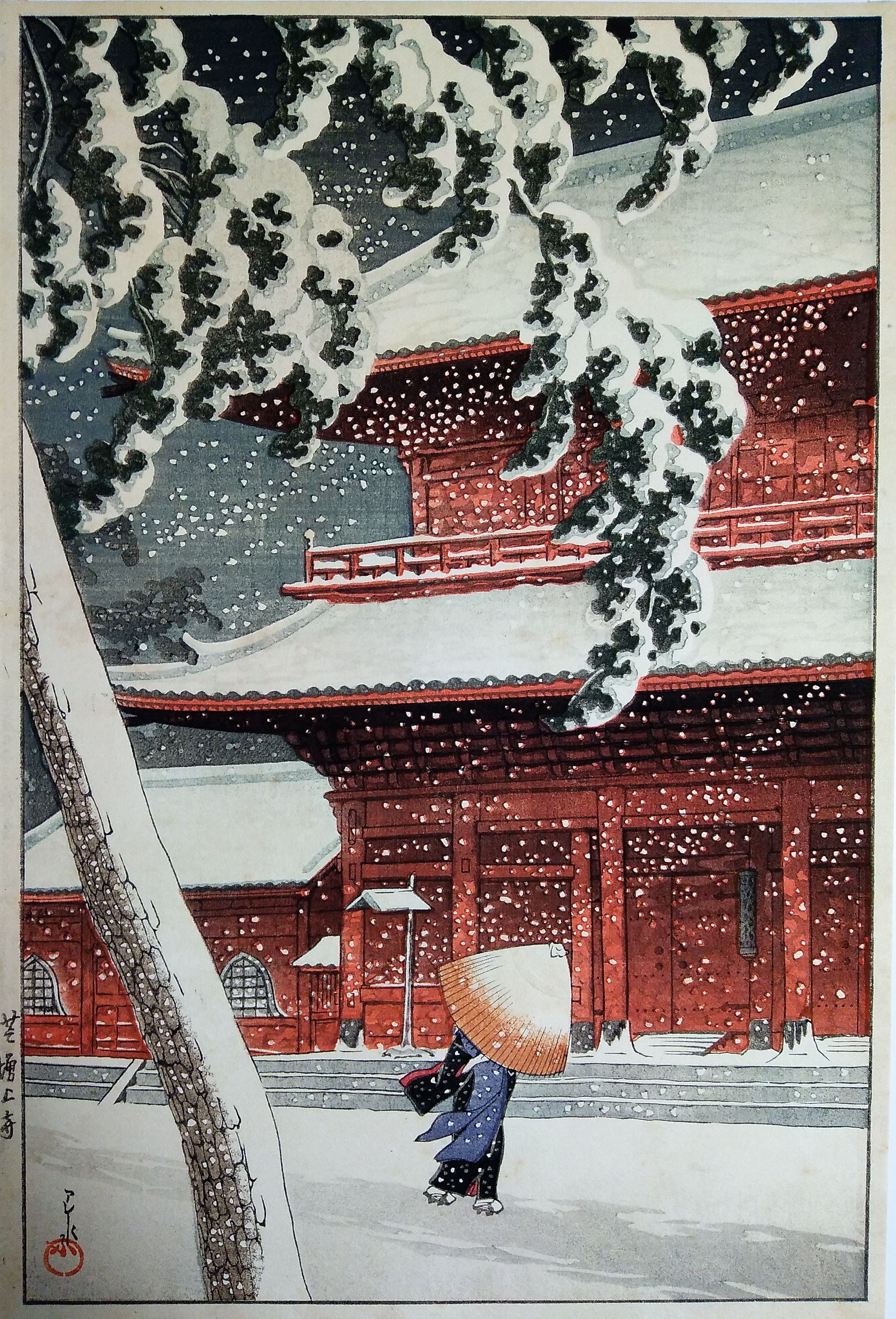Kawase Hasui
1883 ~ 1957Hasui Kawase, born as Bunjiro Kawase in 1883 in Tōkyō, was a significant artist of the shin-hanga movement. He studied Japanese-style painting at the studio of Kiyokata Kaburagi and briefly Western-style painting.
After the family business failed, he decided to fully dedicate himself to art.
Hasui is known for his landscape prints, often depicting little-known rural and urban corners of Japan. He traveled extensively throughout the country, capturing scenic wonders with sketches and watercolor paintings, which then
became the basis for his prints. His works evoke a sense of nostalgia for old Japan and respect traditional culture, emphasizing the beauty of the natural landscape. Hasui was particularly skilled in depicting snow, rain, and night
scenes.
Most of his works were published by Watanabe Shozaburo, the leading publisher of the shin-hanga movement. During the 1923 earthquake, Hasui lost all his woodblocks and over 200 sketches, but he continued to produce prints despite this
devastation. In 1953, the Japanese government bestowed its highest artistic honor on him by commissioning a print titled "Snow at Zozoji Temple" and designating it as an Intangible Cultural Treasure.

